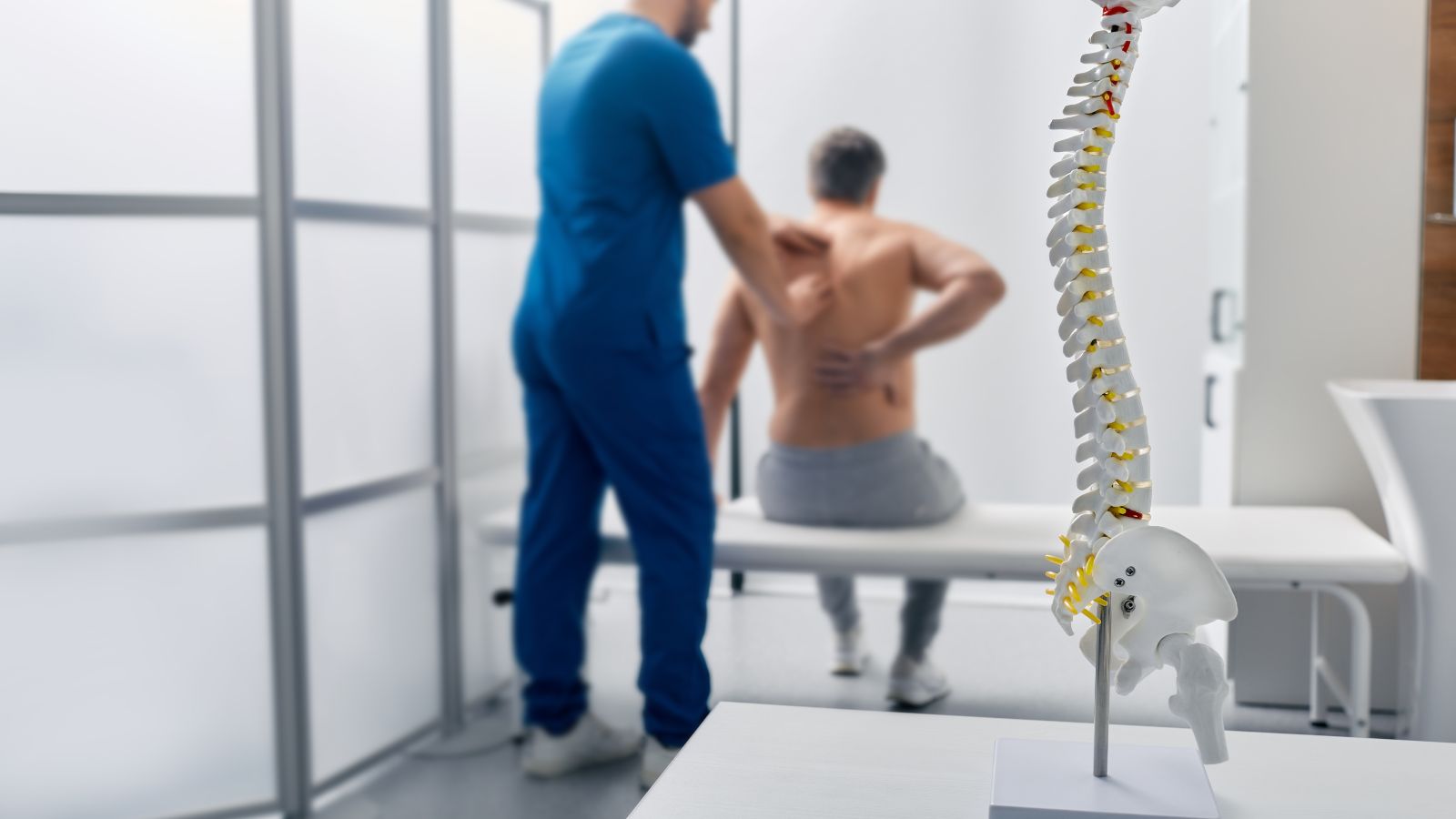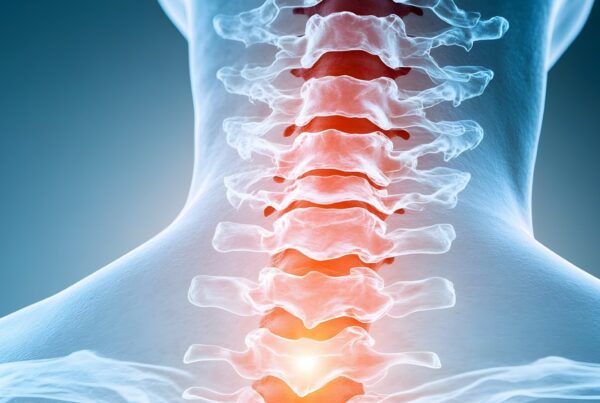Anterior cervical discectomy and fusion (ACDF) is a major surgical procedure that aims to relieve pressure on the spinal cord and nerves. A key question that many patients have after this procedure is, “How long after ACDF surgery can I exercise?”
While the operation often provides significant relief, you’ll need to ease back into your fitness routine gradually and in accordance with your healthcare provider’s recommendations. Working out after ACDF surgery can actually help complement your recovery process — as long as you don’t overdo it, of course.
Make sure to collaborate with your healthcare team and don’t take on too much activity too soon. A major setback could result in serious consequences and even lead to a second procedure.
With that in mind, here’s how to get back to working out after ACDF surgery safely.
Understanding ACDF Recovery Basics
ACDF surgery involves removing a damaged disc in the cervical spine and fusing the adjacent vertebrae using a bone graft and surgical hardware. This fusion stabilizes the spine and can relieve pressure on the affected nerves. However, the bone graft takes time to integrate with the existing vertebrae.
The recovery timeline for ACDF surgery can vary. The key is to follow a structured approach that gives you time to rest while gradually progressing back into physical activity.
Exercising too soon or too intensely could lead to a setback, such as broken hardware or improper fusion. On the other hand, waiting too long to move can result in muscle stiffness, muscle loss, and delayed healing.
Getting up and moving around after your procedure is a good thing, but your body also needs protection and rest in the weeks following your ACDF surgery. Progressive exercise lets you ease back into a fitness regimen and strengthens the muscles around the surgical site. Gradually increasing the duration and intensity of your activity is vital.
The Benefits of Exercise During ACDF Recovery
Contrary to the belief that rest alone promotes healing, recent research suggests that appropriate early exercise may actually improve recovery outcomes when done correctly. Researchers have found that early mobilization can reduce the risk of pneumonia and decrease the likelihood of other consequences.
Safe activity during recovery can also:
- Support bone fusion through improved metabolic activity
- Prevent postural compensations that create secondary pain
- Reduce mental health symptoms like depression and anxiety
In addition to exercising, you should make it a point to eat a balanced diet. Talk to your surgical team for nutrition recommendations based on your unique health profile and fitness history.
It's time to get back
to doing what you love.
Phase 1: Initial Recovery (0–6 Weeks After Surgery)
During the first six weeks after surgery, your focus should be on protecting the surgical site while introducing light activity. Your care team will want to get you up and walking around as soon as possible. However, it’s important to be careful of falls, as a single fall could lead to a setback.
Make sure you have someone at home with you to assist with ambulation, especially while you’re using pain medications. You should engage in recommended activities while avoiding strenuous actions that could damage the fusion site.
Here’s a quick look at what to do (and what not to do) in the first six weeks after surgery.
Recommended Activities
Recommended activities during your initial recovery process include:
- Walking: Short, frequent walks help with circulation and can reduce the risk of blood clots
- Gentle Shoulder Rolls and Shrugs: Carefully roll and elevate your shoulders throughout the day to prevent stiffness
- Posture Work: Practice standing and sitting with proper spinal alignment to support healing
Always follow your surgical care team’s recommendations. They can provide more detailed guidance about when to start walking, how to correct your posture, and more.
Activities to Avoid
During the initial recovery phase, it’s imperative to avoid strenuous activities. Some things to avoid include:
- Lifting anything over 10 pounds
- Driving (typically restricted for two to three weeks)
- High-impact activities
- Sudden or extreme neck movements
Follow up with your neurosurgeon during this phase to track your progress. Typically, patients are approved for additional activities after the six-week mark, but always confirm with your provider.
Phase 2: Early Exercise Progression (6–12 Weeks)
During phase two, the focus is on rebuilding strength and endurance. However, it’s important not to rush back into things too aggressively, even if you think you’re back to normal. You may be feeling good, but your fusion site is still healing. Here’s what to expect.
Expanding Your Exercise Routine
If everything went well during phase one, your provider will likely expand your exercise routine to include the following:
- Low-Impact Cardio: Stationary bikes and elliptical trainers are often appropriate
- Resistance Bands or Light Dumbbells: Can be used for arm and leg exercises, as long as you avoid any strain on your neck
- Physical Therapy: A structured rehab program will include mobility, balance, and core stability work
The emphasis here is low-impact — don’t go for a run or use any weightlifting equipment that places undue stress on your neck.
Continued Restrictions
The following limitations will apply during phase two:
- Avoid overhead lifting
- Limit twisting motions
- Monitor for any signs of pain, numbness, or unusual fatigue
If you’re wondering, “How long after ACDF surgery can I exercise?” A general answer is around week six. However, you should always defer to your provider’s assessment.
Phase 3: Advanced Recovery (3–6 Months)
During the third phase of your recovery journey, you can gradually return to your prior level of activity. Your fitness level before surgery and the progress you’ve made up to this point will have a big impact on what you are and aren’t allowed to do.
Returning to Regular Fitness Activities
Many patients can return to regular fitness activities during this stage, such as:
- Swimming or water aerobics
- Modified strength training using machines
- Light, non-contact sports like golf
Your care team may also clear you to participate in activities like yoga, though you’ll still need to follow certain cervical precautions.
Phase 4: Long-Term Exercise Considerations (6+ Months)
By the six-month mark, many patients are ready to return to regular fitness. However, you may need to continue modifying some of your activities.
Forms of exercise that are typically permitted during this phase include:
- Light jogging
- Resistance training
- Cycling, hiking, and general recreation
Keep in mind that your provider may recommend permanently avoiding exercises that directly strain the cervical spine, such as heavy barbell squats or military presses. You should also make neck adjustments as necessary during stretching to prevent unnecessary strain.
Guidelines for Safe Weight Training After ACDF
Returning to weight training is a major milestone for many patients after ACDF surgery. You can get back to lifting weights with proper technique and gradual progression. Just take things slow to limit the risk of potential consequences.
Proper Form and Technique
When lifting weights after ACDF, keep the following best practices in mind:
- Maintain a neutral neck position
- Begin with light weights and work up gradually
- Use machines whenever possible to reduce the risk to your neck
Free weights aren’t out of the question. However, you need to be cautious and patient. Some free-weight lifting modifications to consider include:
- Replacing heavy barbells with dumbbells or resistance bands
- Skipping overhead presses and opting for lateral or front raises instead
You might also work with a personal trainer who’s familiar with ACDF surgery and the limitations associated with post-surgery activity.
Warning Signs: When to Scale Back Your Workout
Even if you’re progressing well, it’s important to recognize when you might be overdoing it. Some common red flags include:
- New or worsening neck pain
- Tingling, numbness, or weakness in the arms or hands
- Persistent fatigue after workouts
- Swelling or tenderness around the surgical site
If you notice any of these signs, stop exercising and contact your provider right away.
Working With Your Healthcare Team
Healthcare teams that regularly perform ACDF surgeries are accustomed to the question “How long after neck surgery can I exercise?” As such, they should be able to provide basic guidelines to help you resume your preferred activities.
That being said, you should also collaborate with them throughout your recovery process so they can adjust their exercise recommendations based on your progress.
Here are the key members of your recovery team you need to stay in communication with:
- Neurosurgeon: Will clear you for each phase of activity and monitor your progress
- Physical Therapist: Can help you build strength and improve mobility
- Certified Trainer (Optional): Will ensure that you’re using safe techniques and progressing at the right pace when returning to the gym
Be honest about your progress, even if it means having to spend more time in a particular recovery phase. When it comes to working out after ACDF surgery, it’s better to take things slow than to risk consequences like a damaged fusion site or another operation.
The Path to a Safe Return to Fitness
The journey back to fitness after ACDF surgery is just that: a journey. While it may take time, a personalized approach will allow you to move forward with confidence. Here are some important things to remember:
- Stick to the timeline your surgeon provides
- Ease into each phase
- Listen to your body
At Neurosurgeons of New Jersey, we’re committed to helping patients recover after ACDF procedures. Our team will be with you every step of the way as you work toward your post-surgical fitness goals.
Schedule a consultation with our spine specialists to create a personalized post-ACDF exercise plan.
FAQs
When Can I Start Exercising After ACDF Surgery?
Most patients can begin walking the day of or a few days after surgery. Structured exercise usually begins about six weeks after the procedure.
Can I Lift Weights After Cervical Fusion?
Yes. However, you’ll need to avoid overhead lifts that could strain your cervical spine.
What Exercises Should I Avoid After ACDF Surgery?
Steer clear of high-impact activities like running or jumping, as well as overhead presses and contact sports. If an activity aggravates your neck, avoid it.
Will I Ever Be Able to Return to My Pre-Surgery Workout Routine?
In many cases, yes. Your ability to return to your pre-surgery routine will depend on your age, health, fitness level, and specific post-operative goals.
How Do I Know if I’m Pushing Too Hard During Recovery?
Pay attention to signs like pain, numbness, or prolonged fatigue after exercise. If any of these occur, scale back your activity and consult your care team.
Dr. Anthony Conte, MD
Dr. David Estin, MD, FACS
Dr. Christopher Gillis, MD, FRCSC, FAANS
Dr. Jonathan H. Lustgarten, MD
Dr. Ty J. Olson, MD, FACS

About Eatontown
Our team of board certified physicians, located in Eatontown, New Jersey, are dedicated to bringing you the latest developments and treatment options for spinal surgery. We strive to produce the most clarified & clear content to help you make informed decisions on your medical journey. The road to feeling like your true self should not feel lonely- Let us help you. Please call us to schedule a consultation and speak to one of our team members.






